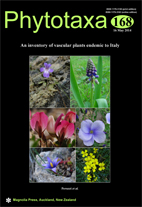Abstract
For the purpose of the present study we considered as Italian endemics those specific and subspecific taxa occurring in Italy that are not found elsewhere with the exception of Corsica (France) and Malta. This study presents an updated list of the endemic taxa in the Italian flora, including their geographical distribution at regional level. Italy is characterized by 1371 endemic species and subspecies (18.9% of the total vascular flora): three taxa belong to Lycopodiidae, one to Polypodiidae, two to Pinidae and 1365 to Magnoliidae (three paleoherbs, 221 monocots and 1144 eudicots). The endemic flora belongs to 29 orders, 67 families and 304 genera. Sicily, Sardinia, Calabria and Abruzzo are the four regions richest in endemics. About 58% of endemics are confined to a single administrative region. The most represented orders, families and genera are: Asterales, Caryophyllales and Asparagales, Asteraceae, Plumbaginaceae and Caryophyllaceae, Limonium, Centaurea and Hieracium, respectively. The phytogeographic isolation of Sardinia and Sicily and the separation of peninsular Italy from Northern Italy is confirmed. The relative isolation of Puglia with respect the remaining southern Italian pensinsular regions is also confirmed. Alpine region endemics (from northern Italy) are underrepresented.

